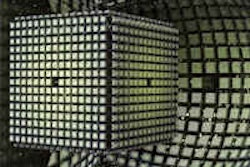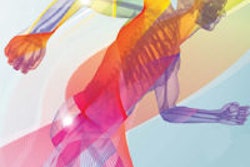
What do radiologists really think about using structured reporting templates? A candid snapshot of hopes, concerns, obstacles, and motivations is revealed in an article published online by a group of leading Belgian radiologists on 14 March in Insights into Imaging.
The same research team headed by Dr. Jan Bosmans, PhD, who asked referring clinicians what they wanted to learn from a radiology report, decided to ask radiologists what they wanted from structured reporting templates and technology, and what it would take to succeed. Although the focus group was conducted at the 2009 European Congress of Radiology (ECR), and was limited to the opinions of 10 radiologists from eight countries, the observations made remain valid today.
In a nutshell, structured reporting templates could be very beneficial if they are easy to use, accurately reflect individual radiologist's reporting content, and do not compromise accuracy or completeness. Also, it would be helpful if they could magically appear in a finalized format that would work for everybody in a radiology department.
Participants had two primary concerns: the complexity and time it would take to develop a viable library of report templates, and the difficulty of obtaining consensus on report-template content. If these obstacles could be overcome, the next two concerns expressed were how much they might negatively impact the productivity of radiologists in preparing reports, and whether they would be flexible enough to allow for the easy addition of free text.
With the belief that use of structured report templates is a question of when, not if, Bosmans, a radiologist at Ghent University Hospital, and colleagues invited all radiologists and information technology professionals who were members of the advisory board of a major healthcare informatics provider (GE Healthcare) to participate in a focus group meeting while attending the ECR. Radiologists from Belgium, Israel, Italy, Germany, Poland, Turkey, and the U.K. accepted the invitation, as well as one IT professional from France.
The objective of the group discussion was to hear the opinions, experiences, feelings, motives, and expectations of radiology professionals concerning structured reporting. The discussion was led by an independent moderator. The participants, who represented typical radiologists practicing in academic or community hospitals, were asked eight questions.
The questions probed how much participants knew about structured reporting, whether they'd had any experiences using structured templates, and if so, whether the experiences were positive or negative. Participants were asked what they perceived advantages/disadvantages of structured reporting to be, and what modifications of existing systems or procedures would be needed. They also were asked if speech recognition systems, PACS, or other technologies could help with the implementation of structured reporting.
Perceived advantages
Known possible advantages of structured reporting systems include the potential ability to improve communication by providing consistent information presented in a standardized format and thus increasing the satisfaction of report recipients, to increase report turnaround time and reduce costs associated with radiology reporting, and to simplify quality and compliance reporting.
The group said that structured reporting templates would improve the overall quality of patient care. They would force radiologists to use specific terms, and reduce verbosity and lack of specificity that referring physicians complain about. A structured report would enable clinicians to immediately identify the most important elements of the report and not overlook key details. In this manner, it could contribute to reducing "information overload" that doctors are increasingly experiencing.
Participants pointed out that as long as uniform coding and a standardized, comprehensive, radiological lexicon were utilized, the contents of structured reports would be easier to incorporate in an electronic medical record and to mine for research data. If properly designed, they could add to the automation of the reporting process in a useful way, alleviating the radiologist from repetitive reporting tasks. One example given was automating the calculation of complex measurements once numbers were added.
Structured reports could also facilitate their translation into multiple languages, making it easier for all physicians who treated a patient to understand.
A concern was raised that the use of structured templates with numerous shortcuts might have a negative effect on residents in training. Ways to circumvent this that would be activated only for residents preparing reports were discussed.
Obstacles and concerns
While focus group members did not express any fundamental resistance against the concept of structured reporting, discussion about obstacles to implementation proved to be the focal point of the meeting, Bosmans and colleagues wrote.
The authors noted that many objections seemed to be raised against modifying the status quo: Radiologists develop reporting skills and methods they consider optimal. They also said that a large number of objections would evaporate if radiologists could continue to dictate in free text and computers would do the report structuring according to radiology department agreed-upon template content built into commercial informatics systems.
Several issues were important to them. Would using structured report templates distract radiologists from image interpretation? What would input commands/mechanisms be and could they be customized? Would the templates hinder the ability to craft a report to meet the special requirements of individual referring physicians? Would they be comprehensive enough?
Since the time of the focus group meeting, the RSNA has introduced its free library of more than 100 templates of best-practice reports prepared by more than 100 experts working in subspecialty committees. The templates are designed so that they can be adapted and adopted based on local-practice patterns. The downloadable template library may be accessed here.



















